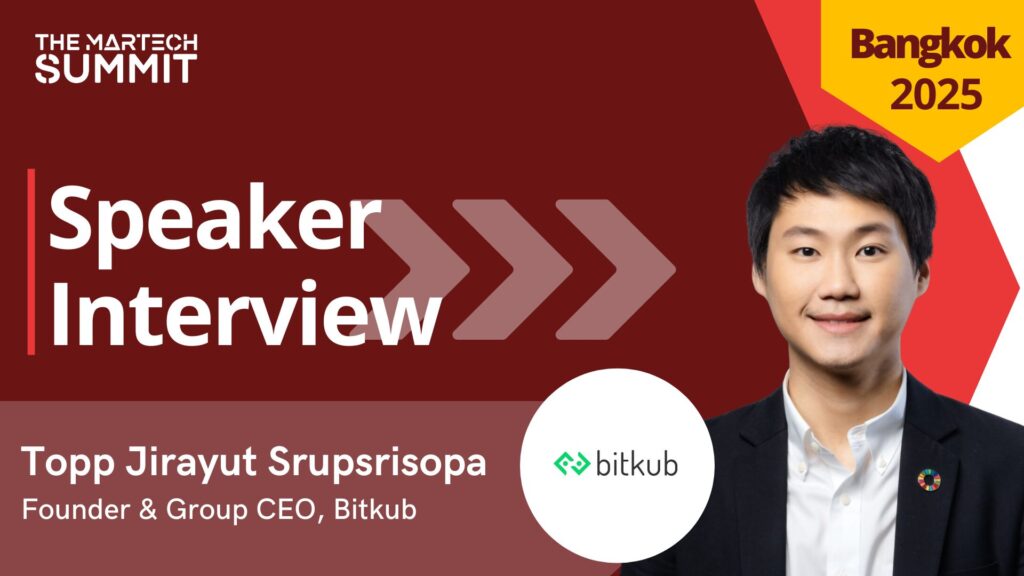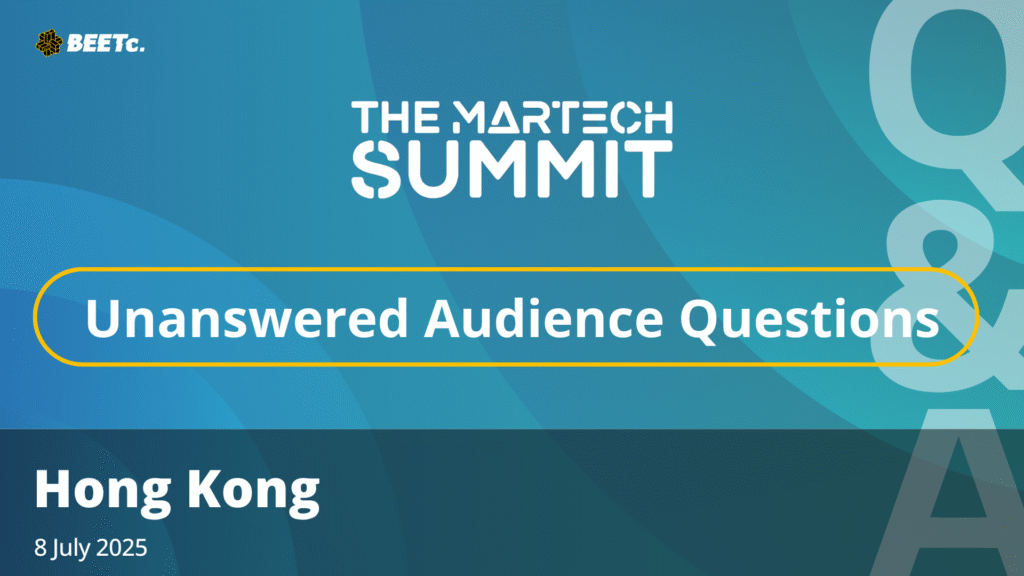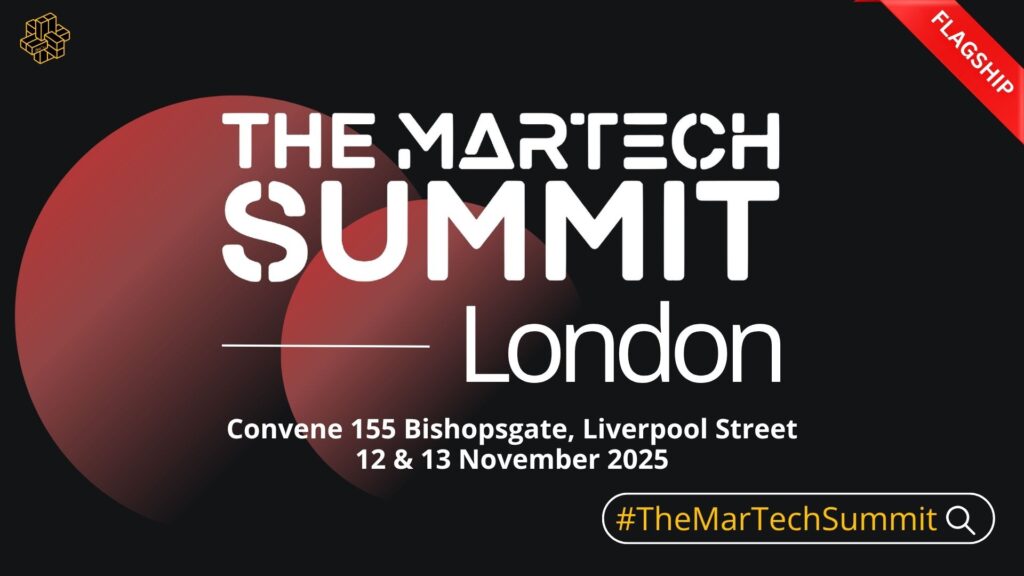Our very first Virtual Executive Roundtable featuring our superstar advisory board members successfully took place on 13th April 2022. In this brief, 40 minutes session, we had the opportunity to catch up and fill our advisory board members in on the past few months here at The MarTech Summit and our upcoming plans for the rest of 2022.
We also hosted a short Q&A with a couple of questions:
1. What is new and next up in MarTech?
2. Which part of your role wakes you up in the middle of the night?
To begin with, let us catch you up on our 2022! We’ve had a busy start with 2 well attended Virtual Summits. February was the first of the year set in the APAC region with a rich agenda – day 1 focussing on B2B & day 2 focussing on B2C businesses. The majority of our attendees logged in from Singapore, Hong Kong and Australia but we had attendees from all over the world with a total of 65 countries represented! 42% of attendees came from companies with over 1000 employees and 60% were in roles that are “Head of” departments and above. Moving on to March we shifted focus to more western pastures and hosted a virtual event for the European region. Again, this was well attended with delegates tuning in from 32 countries in Europe, and as there are 44 countries in Europe this means we had an audience from around 70% of the continent. Way to go team! Our attendees enjoyed a variety of topics covered for the first time on our agenda, including right-housing and the metaverse, both proving to be very popular.
We can safely say that the over-arching key takeaways from both events were that in marketing technologies it is key to focus on the entire customer journey, who is coming and what channels they are coming from, including which content is driving them there? Then, for the comparative analysis to begin, by putting all the collected information into a funnel.
– What’s next for The MarTech Summit?
Now, looking to the future and the next couple of months ahead: We will be hosting another 2 in-person events, firstly, Singapore this week at the Suntec Exhibition Centre and at the end of May, we will again be in London with a Digital Experience focussed agenda. This is in addition to our Virtual MarTech Summit APAC also in May (Free to attend!) – Tickets are still available for both!
– What have we discussed during this roundtable?
For the sake of facilitating a healthy and fruitful discussion, we divided our participants into 2 virtual rooms so that everyone could get enough time to contribute. Let us dive into some of the insights and key takeaways from our advisory board members in room 1:
1- What is new and next up in MarTech?
“One key trend is the data privacy increasing in terms of GDPR proliferating into the APAC region. Mobile operating systems are adopting this privacy-centric approach too. At first, iOS, by default, started asking people if they want to receive notifications from the brands. Now Android is going to do that with Android version 13 as well. So, with all these things coming along. The connecting point is not around data privacy but around the quality of interaction is particularly important. Previously we could rely on mass marketing techniques reaching out generally, but now with the data being scarcer and more anonymised, quality of interaction and curation, which were very mainstay in very traditional marketing routes, becomes much more important for us to focus upon and how to translate it in a digital world when we are always so distant from the customer.”
– Zhiliang Li, Head of CRM, Zalora Group
“Data privacy is a big part of what is next. Coming from the Cybersecurity, a B2B industry my approach to this topic could be divided into 2 bullet points: Number one is the intent data. Intent data is not new, but it is getting mature and there are more technologies and studies becoming available for us, marketers to use and get to know a lot more about the intent data and learn how to start decrypting it and utilising it in our advantage to move the buyer into the buyer journey. In B2B industry, we do not look into individuals. We investigate the entire buying committee and map out who is who and that’s why intent data is important to us. And the second thing is conversational marketing. A lot of websites are aiming to have conversations via chatbots at the initial stages of the funnel. As a marketer, you do not really need to understand those technologies but still use them as they help get the desired business outcome and help shape the conversations between the buyer, which is anonymous to us and the brand which is the company that we work for.”
– Jessie Chong, Marketing Director, SEA, Trend Micro AMEA
“From a corporate real estate perspective, it really comes down to understanding how people are using spaces and how you can connect with them and how you can communicate your brand’s ethos and what your products are to them in a way in the space where they are. Understanding how people are interacting with your brand, where and when they are interacting is important. We are using a lot of technology to do that increasingly. We look into where people are sitting in the offices, are they sitting in the lounge areas, are they sitting at coworking tables, are they using the phone booths right and using that information then to inform how offices should be designed and how they should evolve? That is one of the main things that we’ll be looking at in the next couple of years.”
– Chelsea Perino, Managing Director, Global Marketing & Communications, The Executive Centre
And let’s visit room number 2 for the second question:
2- Which part of your role wakes you up in the middle of the night?
“Integrating the data from both physical and digital sources is what we struggle on a day-to-day basis and finding the right balance and strategy and identifying what are the customer segments based on all these different data points is our pain point. Another thing is that, we’re going through an M&A between Troy and Lazada, so now that adds complication to the entire situation because they have data, we have data, we have very similar products, we have very similar customers, but the way that they are looking at their customers is different from how we are looking at our customer. However, essentially, these are the same customers. So, integrating those different data points, identifying a more synergistic customer segmentation and then plan to execute for those segmentations are what is becoming more complicated for us. So as in again so understanding how we can integrate that different. Data types, as in combining those data silos and then formulating a strategy based on all those things, is it’s kind of what is keeping me up at night right now.”
– Avneesh Kabra, Marketing Manager (APAC & MEA), Troy Corporation
“The pace is sometimes not matching what my global team. We are always, facing some challenges and what is complicating the whole situation for me and what is new is the consolidation of the MarTech space. One year we are talking to one SaaS company and then the next year it’s acquired by a bigger player, and you have to consolidate. So, for companies of our size, it’s becoming inevitable to work with, for example, Salesforce if we want to use MarTech. But at the same time no company has the best solution to overcome all the challenges we have, so, we have to think about Power BI now. It’s quite ironic that we are using Salesforce for MarTech, but power BI for the dashboards. So that is one thing. Another issue is that we are still not sure if it is really the right approach to push digital on our customers because we are a traditional company, we are a brick-and-mortar company and you know ultimately our customers if you look at the automotive side are handful of 20 car makers. For example, you have to go to Toyota or Mazda and show them the engines and, you know, physically they will touch the product and then buy it. So, I think we still have to define the relevance of digital and to the extent we want to go there and then of course define our short-, mid- and long-term goals. And it’s not possible, right? Finding the one objective. The one goal that I should focus on this year as the key target for my team.“
– Ashish Shukul, Director – Communications & Marketing, Asia Pacific, Schaeffler
“We should look at the full funnel marketing. It’s no more the linear process of from awareness to purchase, the journey for a consumer can start anywhere. So, when you think about the full funnel marketing, we’re actually looking at how does these MarTech solutions stack up in this entire full funnel journey. There’s not one magic solution that runs across from insights to figuring out the segmentation. We have multiple MarTech solutions that we need to look for first party to 2nd party data then for activation, there’s another MarTech solution we need to look at. So, as a company, we always look at how could we build a full funnel marketing that then allows the entire ecosystem to work seamlessly and that’s what keeps me awake. We’ve been on this journey on audience segmentation for many years. We’ve been on this journey of audience mapping. It’s never worked out from an ROI standpoint for any marketer yet, right?”
– Anupama Biswas Senior Director- Analytics & Insight lead for APAC, The Coca-Cola Company
Once again, a big thank you to all our advisory board members for their time and insights helping us shed light on the future of MarTech! We look forward to hosting you at the next edition of the Advisory Board members update Roundtable in July!
By Rahmi Atalay.













